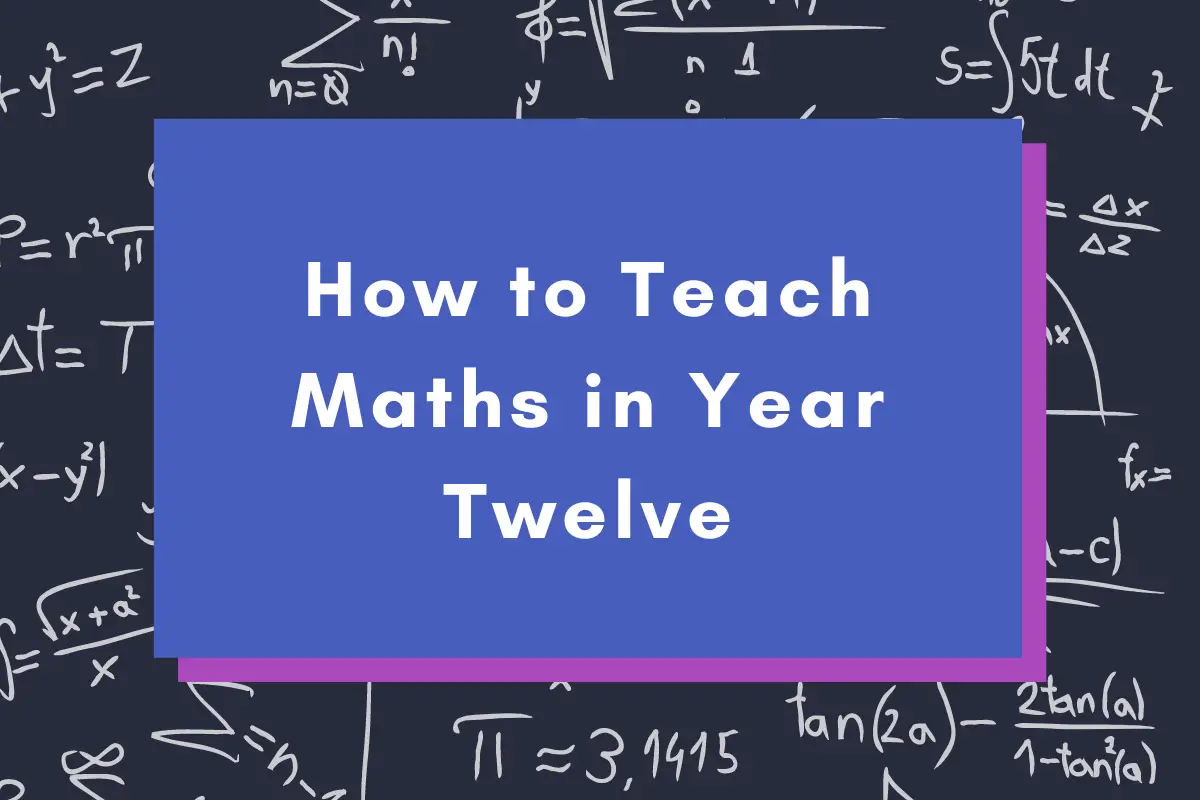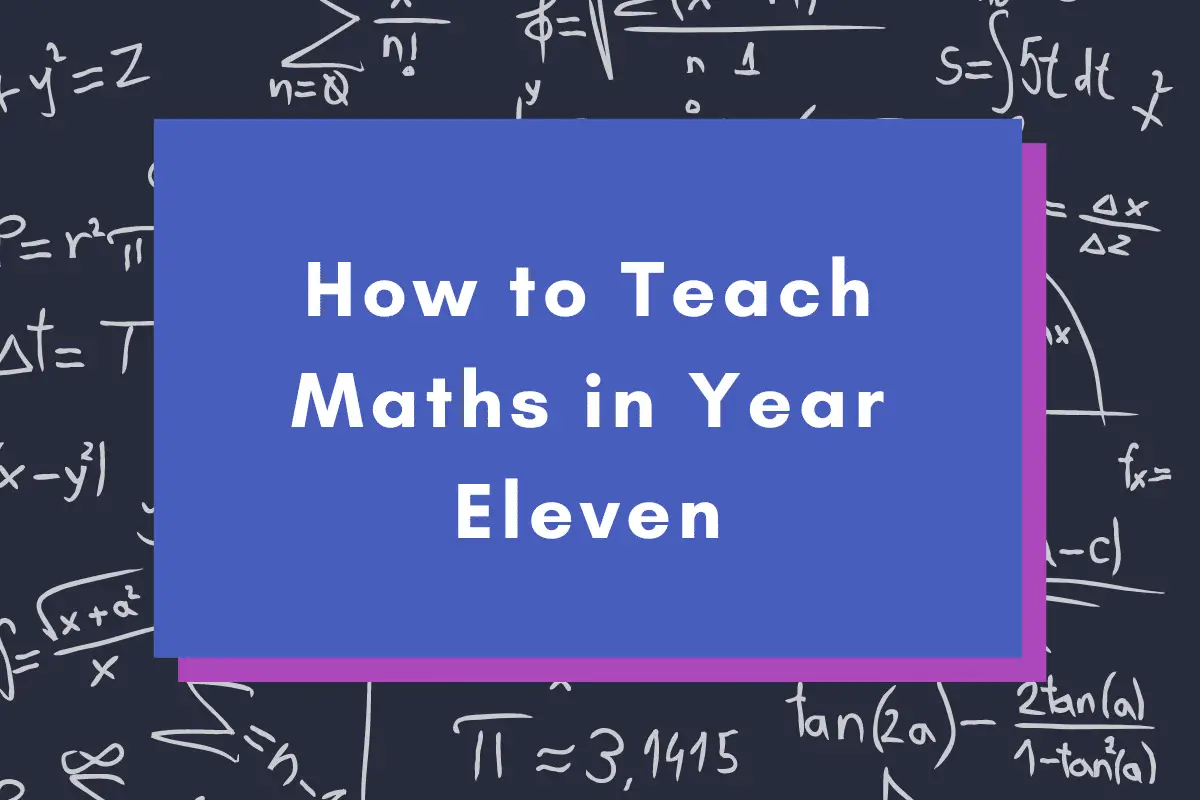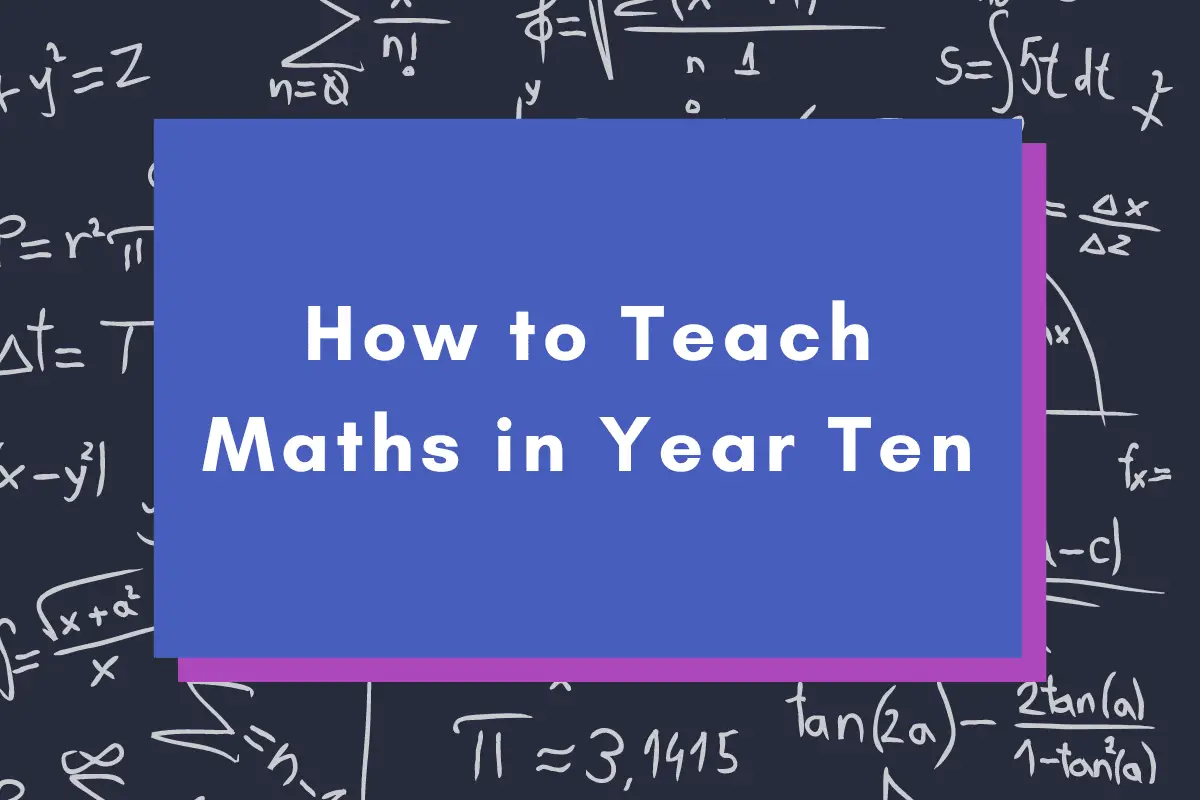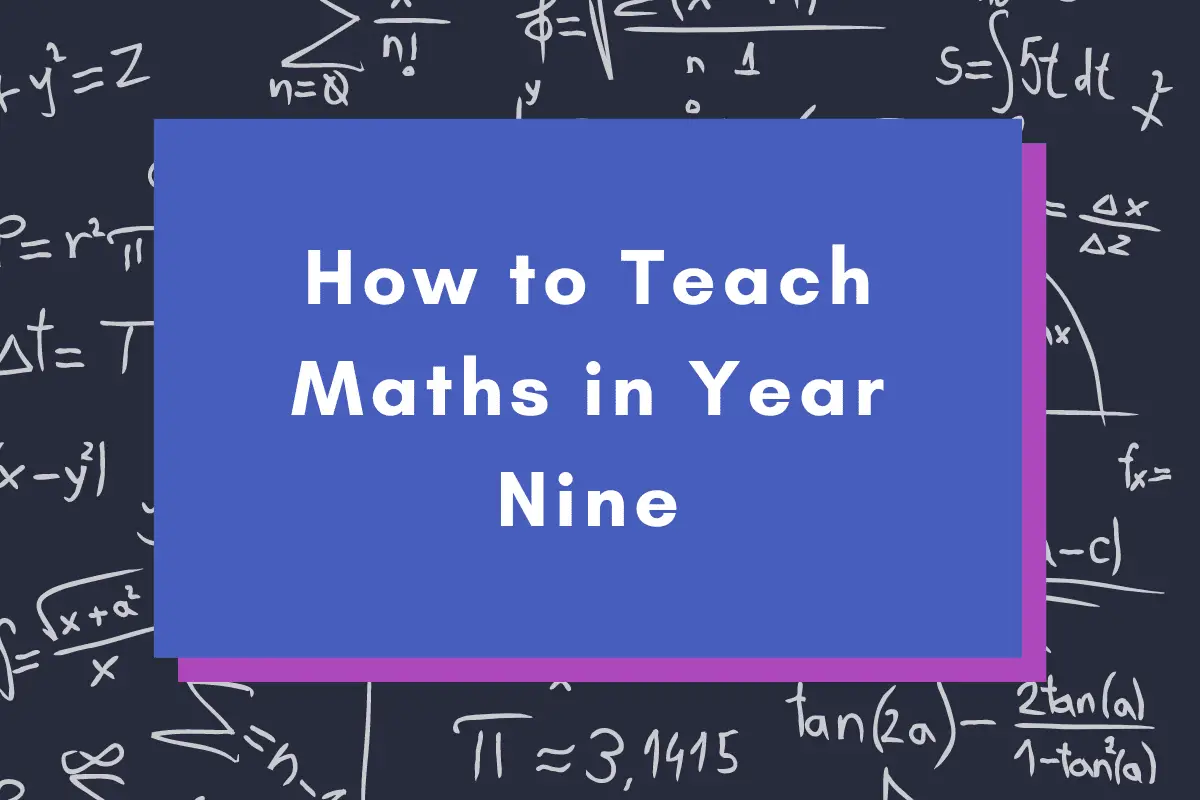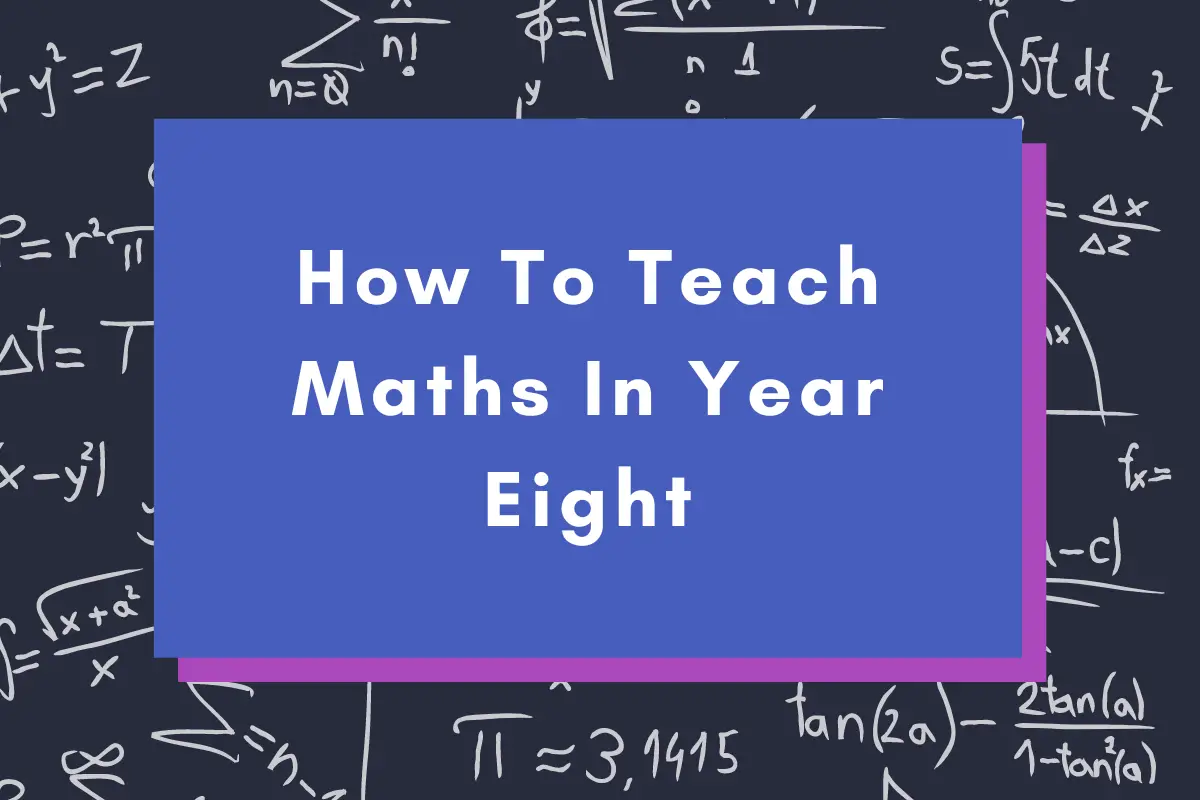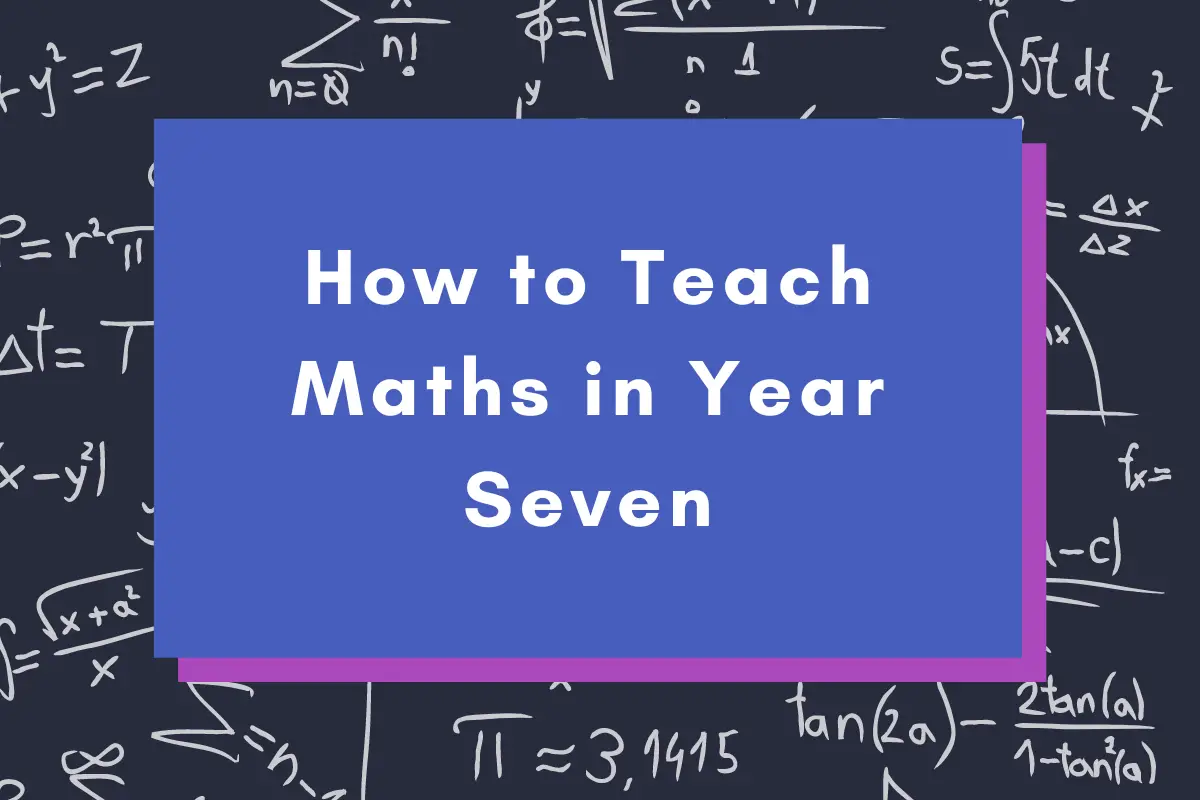In the early years of education, particularly during the Reception year, children are introduced to the fundamentals of mathematics as defined by the national curriculum.
Reception marks the beginning of a child’s formal education in the UK and sets the stage for all future learning. The maths curriculum at this stage is designed to be engaging and accessible, fostering a positive attitude towards the subject.
Children learn to recognise numbers, count accurately, and develop an understanding of basic mathematical operations through play and structured activities.
Related: For more, check out our article on What Science Is Taught In Reception?
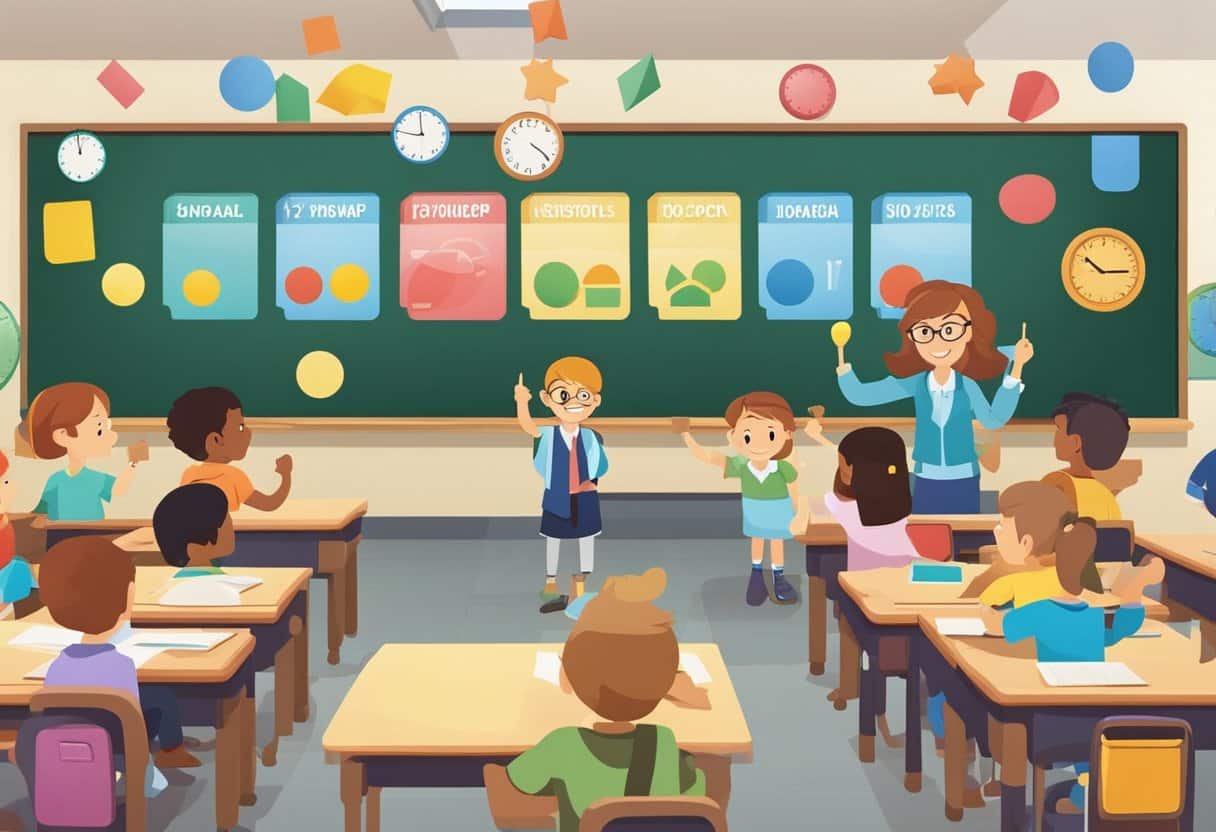
A critical aspect of maths education in Reception is laying down the foundations for numeracy. Pupils are taught to understand and use numbers in various contexts, including counting, ordering, and making simple calculations.
They also start to explore concepts of shapes and space, which not only supports mathematical understanding but also contributes to their knowledge in subjects such as science and art.
Moreover, the introduction to measurement allows children to begin to comprehend and use terms such as heavier, lighter, longer, and shorter in everyday scenarios, preparing them for key stages ahead.
Key Takeaways
- Reception maths introduces children to the basics of counting, calculation, and mathematical language.
- Pupils explore shapes, space, and begin to develop measurement skills through practical activities.
- The national curriculum ensures a structured approach to integrating maths with other subjects, providing a foundation for future key stages.
Related: For more, check out our article on What Spelling Rules Are Taught In Reception?
Foundations of Numeracy
In the reception year at primary school, children are introduced to fundamental concepts that establish a strong foundation in numeracy.
They learn to understand and work with numbers, beginning with counting and progressing to simple calculations like addition and subtraction.
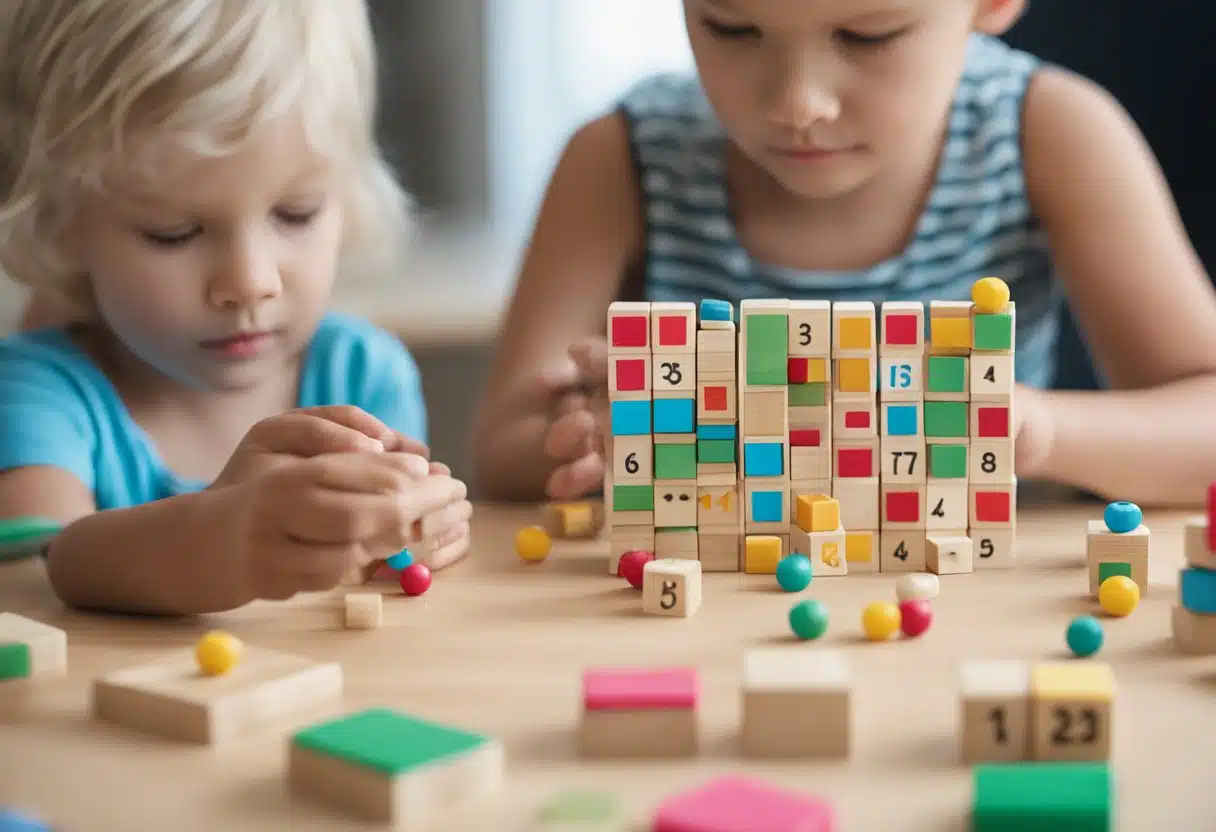
Understanding Numbers
Children begin with recognising and understanding numbers. They learn to count sequentially and understand that numbers associate with quantities.
Activities involve matching numerals to groups of objects and identifying numbers in their environment.
- Counting objects, such as toys or blocks, helps them connect numerals with physical quantities.
- Recognising patterns and the order of numbers introduces children to ordinal numbers and gives them a sense of range.
- Estimating quantities introduces children to make educated guesses regarding the number of items or objects.
Beginning Addition and Subtraction
As children grow comfortable with numbers, they start learning fundamental operations of addition and subtraction.
- Using a number line can help visualise the concept of adding to or taking away from a group, facilitating comprehension of basic calculations.
- Simple word problems are introduced to apply addition and subtraction in practical situations, moving from concrete to more abstract representations.
Through hands-on activities and interactive learning, reception students develop early arithmetic skills that are crucial for their mathematical journey ahead.
Related: For more, check out our article on What Geography Is Taught In Reception?
Exploring Shapes and Space
In the Reception year, children are introduced to the fundamental concepts of geometry, focusing on shape recognition and spatial relationships.
These foundational skills are crucial for their understanding of the wider mathematical world.
Identifying Shapes
Children begin to recognise and name simple 2D shapes, such as squares, circles, triangles, and rectangles, exploring their properties and how they differ from one another.
They engage in activities that involve sorting shapes based on characteristics like the number of sides or corners. For instance, they might sort a collection of shapes into groups, placing all the triangles in one area and all the circles in another.
Spatial Awareness
Spatial awareness is developed through practical experiences, as children learn to describe the space around them and how shapes can fit within it.
They experiment with constructing patterns, understanding sequences, and recognising patterns within their environment. Through tasks like building with blocks or arranging objects, they gain an understanding of concepts such as ‘above and below’ or ‘beside and between’.
Incorporating these elements into early maths education allows children to establish a strong base from which to expand their mathematical knowledge in subsequent years.
Related: For more, check out our article on How To Follow Development Matters In Geography?
Developing Measurement Skills
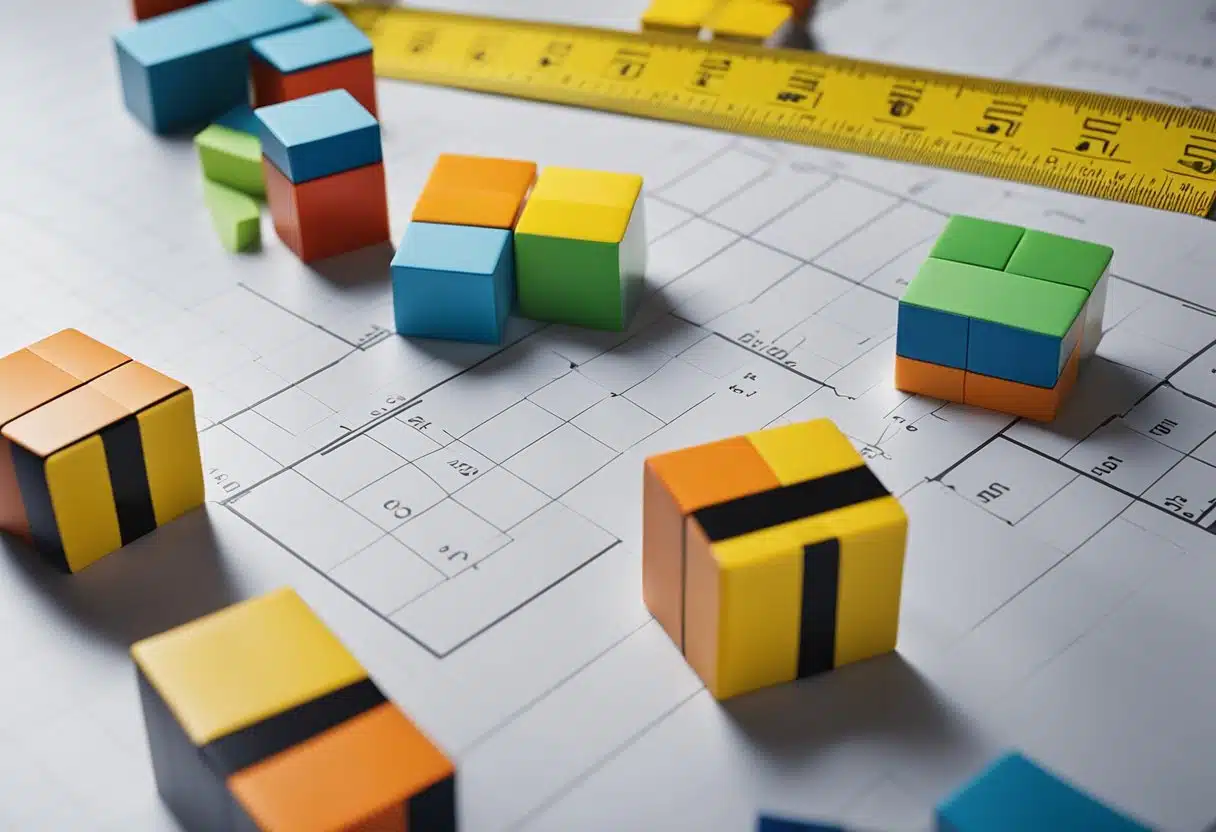
In Reception, children begin to grasp the fundamental concepts of measuring and understanding time, which are essential life skills.
These measurements are often explored through practical, hands-on experiences that relate to the children’s surroundings and daily routines.
Learning About Time
Children are introduced to the concept of time through activities that familiarise them with the clock and daily events. They learn to recognise the hour hand and understand the sequence of events, such as the school day’s schedule.
Tools for telling time, including simple analogue clocks and timers, help crystallise these abstract concepts. They may discuss moments in the day like lunchtime or story hour, fostering an early relationship with the clock and the passing of time.
Comparing and Sharing
The early maths curriculum also includes learning to compare and share objects by size, length, or weight. Children use direct comparison, placing items side by side to observe differences.
Teachers incorporate fun activities where children practise sharing equally, promoting an understanding of ‘fairness’ and division, which lays the groundwork for more advanced mathematical concepts like fractions. Observing, handling, and comparing physical quantities make maths tangible for Reception students.
Integrating Maths with Other Subjects
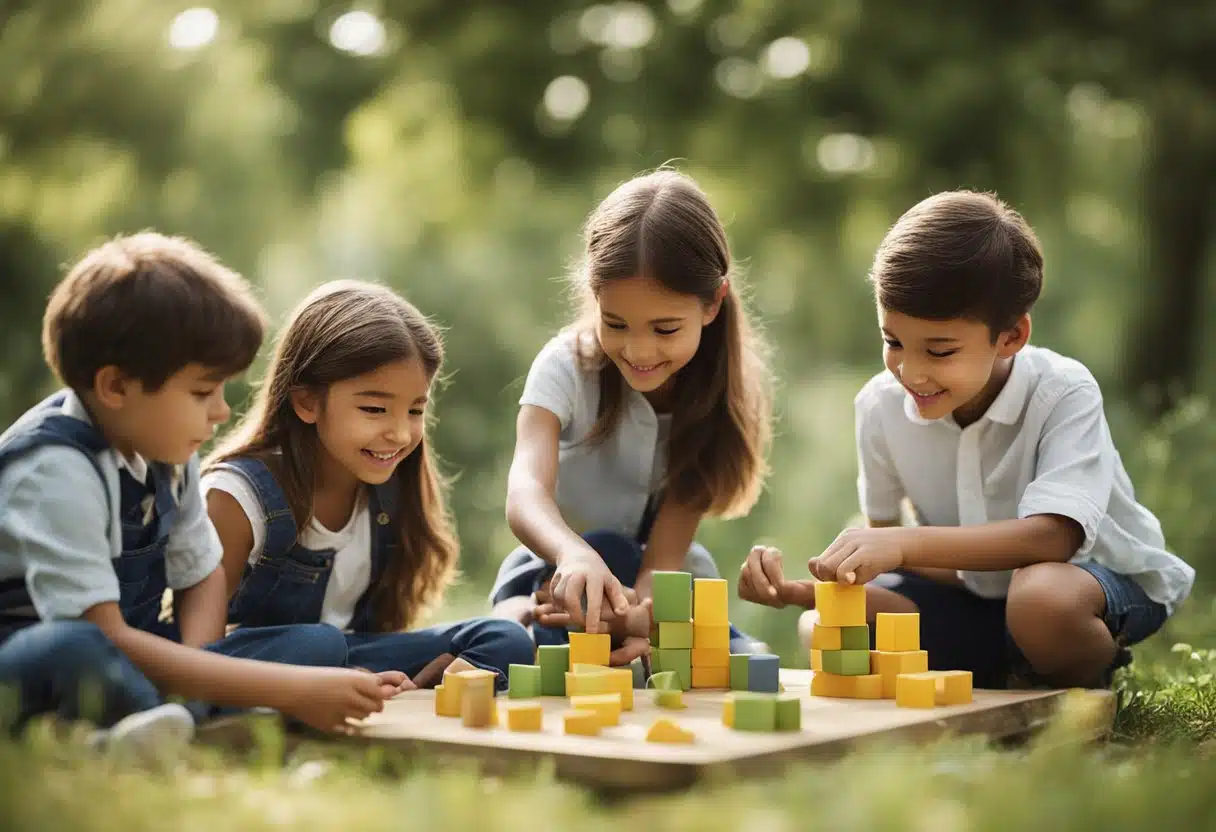
Integrating maths into other subjects provides a holistic learning experience where students can see the relevance and application of mathematical concepts in various contexts.
This approach enhances their reasoning capabilities and supports the development of communication skills.
Maths and Literacy
When merging maths with literacy, educators focus on reinforcing numerical literacy through English. Activities might include story problems that require determining the mean number of items in a scenario or exploring patterns using descriptive grammar.
Students are encouraged to articulate their mathematical reasoning, elucidating their understanding of the mathematics involved, thus enhancing their literacy and communication skills.
For example, a lesson may involve a story where characters use units of 10s to count objects.
Throughout the lesson, students engage in discussions, presenting their findings, comparing modes of data, and constructing sentences that reflect their mathematical conclusions, thereby intertwining maths with English grammar and literacy.
Maths and ICT
Incorporating maths within Information and Communication Technology (ICT) lessons involves using digital tools to explore mathematical concepts.
Software programmes can help students visualise mathematical operations and understand abstract concepts like mean and mode. It also promotes computational thinking, which is closely related to mathematical skills such as logic and reasoning.
A practical ICT integration could involve using programmes to gather data, calculate the mean of the numbers, and identify the mode in sets of data.
Students might also work with sequences, using ICT resources to create patterns or lists organised by various mathematical properties, all while enhancing their ICT proficiency.
Support and Resources for Maths Learning
Parents play a crucial role in their children’s education, particularly during their early learning journey. When it comes to Reception maths, there are various support mechanisms and resources designed to make the transition as smooth as possible.
For free resources, parents can discover a wealth of materials online. Worksheets, interactive games, and guided activities can be easily accessed to supplement a child’s learning.
Websites like Oxford Owl offer a collection of activities and resources tailored for Reception-aged children.
| Type of Resource | Description |
|---|---|
| Worksheets | Printable activities focused on numbers, counting, and basic mathematical concepts. |
| Online Games | Interactive platforms that make learning fun through problem-solving and games. |
| Educational Videos | Short, engaging clips that teach maths concepts with visuals and songs. |
During the summer term, the consolidation of the year’s learning is key. Twinkl provides themed resources to support educators and parents through this period, ensuring that maths remains an exciting subject.
Parents should also explore structured schemes that aim to build a solid maths foundation. White Rose Maths is an example of a comprehensive programme that uses a range of learning methods to foster an understanding of numbers and patterns.
In summary, a combination of free and structured resources can greatly support maths learning during the Reception year. Through a blend of fun activities and formal learning, children can develop critical skills that set the stage for future academic success.
Frequently Asked Questions
The reception year is crucial for laying the mathematical foundation in young learners. It addresses core concepts and prepares children for more advanced topics as they progress through school.
What mathematical concepts are introduced to children in Reception?
Children in Reception are introduced to basic numbers and counting, shapes, space, and measures. They learn to recognise, describe, and create patterns, and begin to understand concepts like more or less.
How do the maths objectives for the Early Years Foundation Stage (EYFS) apply within Reception?
The EYFS framework ensures that pupils in Reception are engaged in mathematical practices that include counting, sorting, matching, and exploring numbers and shapes, which are foundation stones for future learning in mathematics.
Which resources and books are recommended to support maths learning in Reception?
Recommended resources often comprise interactive games and activities, picture books that incorporate mathematical concepts, and online platforms that gamify learning such as mathematical skills programs.
What activities are effective in teaching maths to Reception students?
Effective activities include counting games, shape sorting, and use of manipulatives to introduce mathematical ideas. Role-play and everyday scenarios are also utilised to develop a child’s numeracy.
How can parents and educators create engaging maths worksheets for Reception learners?
Creating engaging worksheets typically involves incorporating colourful images, simple puzzles, and tasks that relate to real-life scenarios relevant to a child’s world. Balance between challenge and skill level is key.
At what stage should a Reception pupil typically be in their mathematical development?
By the end of Reception, pupils should typically be able to count confidently, understand basic concepts of addition and subtraction, recognise patterns, and compare sizes, shapes, and quantities.

